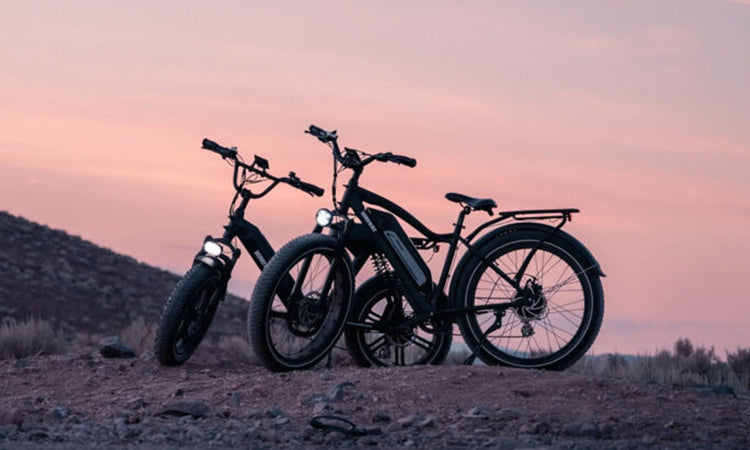Electric bikes, or e-bikes, are becoming increasingly popular as a convenient, eco-friendly, and efficient mode of transportation. Whether you're looking for a daily commuter, a weekend adventure bike, or something to tackle off-road trails, there's an e-bike for every need. Here's a comprehensive guide to help you choose the perfect e-bike.
1. Determine Your Needs
Daily Commuting: If you're planning to use your e-bike for commuting, look for models with a comfortable riding position, integrated lights, and fenders. These bikes often have a moderate range and speed, perfect for city riding.
Off-Road and Adventure: For those who enjoy off-road trails, an e-mountain bike (e-MTB) with a robust frame, suspension system, and knobby tires is ideal. These bikes offer higher power and range to handle rough terrain.
Recreational Riding: If leisure rides on weekends or evenings are your goal, consider a hybrid or cruiser e-bike. These bikes offer a relaxed riding experience with comfortable seats and easy handling.
2. Understand E-Bike Classes
E-bikes are categorized into three classes based on their motor assistance and speed:
Class 1: Pedal-assist only, with a maximum assisted speed of 20 mph. These bikes are widely accepted on bike paths and trails.
Class 2: Throttle-assist and pedal-assist, also limited to 20 mph. The throttle allows you to ride without pedaling.
Class 3: Pedal-assist only, with a maximum assisted speed of 28 mph. These bikes are faster and might be restricted from certain bike paths.
3. Battery and Range
The battery is a crucial component of an e-bike, determining how far you can travel on a single charge. Consider these factors:
Capacity: Measured in watt-hours (Wh), higher capacity batteries offer longer ranges. For daily commuting, a 400-500Wh battery might suffice, while off-road or long-distance riders may need 600Wh or more.
Charging Time: Most e-bike batteries take 3-6 hours to fully charge. Some models offer fast-charging options, reducing downtime.
Removability: Removable batteries are convenient for charging separately and can be swapped for extended rides.
4. Motor Types
E-bikes come with different motor types, each offering unique benefits:
Hub Motors: Located in the front or rear wheel, these motors are typically more affordable and easier to maintain. They provide a smooth, steady ride.
Mid-Drive Motors: Positioned at the bike’s bottom bracket, these motors offer better weight distribution and handling. They are ideal for hilly terrain and off-road biking.
5. Key Features to Consider
Frame Material: E-bike frames come in aluminum, carbon fiber, and steel. Aluminum is lightweight and affordable, carbon fiber is lighter and stronger but more expensive, and steel offers durability and comfort.
Brakes: Opt for hydraulic disc brakes for reliable stopping power, especially in wet conditions. Mechanical disc brakes are a good alternative for budget-conscious buyers.
Gears: Multi-gear systems are essential for tackling various terrains. E-bikes with more gears offer better versatility.
Suspension: Front suspension (hardtail) is suitable for most riders, while full suspension (front and rear) is ideal for off-road and rugged terrain.
Accessories: Consider built-in lights, racks, fenders, and integrated locks for added convenience and safety.
6. Test Ride and Warranty
Before purchasing, test ride different e-bikes to find one that feels comfortable and suits your riding style. Check the warranty on the bike and its components, especially the battery and motor, to ensure long-term reliability.
7. Budget Considerations
E-bikes range in price from around $1,000 to over $5,000. Determine your budget and prioritize features that match your needs. Remember that higher-priced models often offer better components, longer battery life, and more advanced features.
Conclusion
Choosing the right e-bike involves understanding your needs, knowing the different classes and types, and considering key features like battery life, motor type, and frame material. By taking the time to research and test ride various models, you can find an e-bike that enhances your riding experience and meets your lifestyle demands. Happy riding!



